
On 29 Jun 1956, the Act that made possible the modern interstate highway system in the U.S. was signed by President Dwight D. Eisenhower. Eisenhower had seen the speed and efficiency in moving troops and equipment on the four-lane autobahns in Germany during WW II.
You can read a newspaper article from the next day reporting Eisenhower Signs Road Bill.

On 29 Jun 1868, George Ellery Hale was born, a foremost American astronomer, who laid much of the foundation of modern astrophysics and observational cosmology. He was a groundbreaking solar astronomer, inventing new instruments and methods of studying the sun's activity. His invention of the spectroheliograph and subsequent discovery of the magnetic field lines of sunspots nearly earned him a Nobel prize. He's best known for the planning and building of the great Hale Telescope of the Palomar Mountain Observatory. Today's book pick is: Explorer of the Universe: A Biography of George Ellery Hale (History of Modern Physics and Astronomy Vol. 14), by Helen Wright, who provides a rare look at Hale's scientific achievements: his invention of the spectroheliograph, his discovery of the magnetic nature of sunspots, and his legendary leadership in founding the Yerkes, Mount Wilson, and Palomar Mountain Observatories.
It is available from Amazon, typically about New from $128.75. Used from $62.95. (As of earlier time of writing - subject to change.)
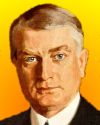 | The aim of medicine is to prevent disease and prolong life, the ideal of medicine is to eliminate the need of a physician. |
 | Any one who is practically acquainted with scientific work is aware that those who refuse to go beyond fact, rarely get as far as fact. |
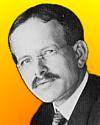 | Like buried treasures, the outposts of the universe have beckoned to the adventurous from immemorial times. Princes and potentates, political or industrial, equally with men of science, have felt the lure of the uncharted seas of space, and through their provision of instrumental means the sphere of exploration has made new discoveries and brought back permanent additions to our knowledge of the heavens. |
| Before you look at today's web page, see if you can answer some of these questions about the events that happened on this day. Some of the names are very familiar. Others will likely stump you. Tickle your curiosity with these questions, then check your answers on today's web page. | |
| Births | |
 | George Ellery Hale, born 29 Jun 1868, was an American astronomer known for his development of important astronomical instruments, including the Hale telescope (completed 1948), a reflecting telescope at the California Institute of Technology’s Palomar Mountain Observatory near Pasadena. He is known also for his researches in solar physics, particularly his discovery of magnetic fields in sunspots. To the nearest 10 inches, what is the size of the Hale telescope reflector? |
 | William James Mayo, an American surgeon born on 29 Jun 1861, was one of two brothers and their father who pioneered the concept of a group medical practice. They were renowned for adopting new techniques. The practice developed into the Mayo Clinic, which opened its own building in 1914. In which U.S. state was the Mayo Clinic established? |
| Deaths | |
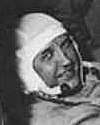 | On 29 Jun of a certain year, three Soviet cosmonauts died while during the re-entry of their Soyuz spacecraft. The accident was due to a premature cabin decompression. In what decade did this happen? |
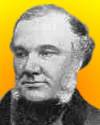 | Thomas Addison (1793-1860) was an English physician who was the first person to correctly connect the symptoms of what is now called Addison’s disease to a functional deficiency of certain glands. Which glands did he identify? |
| Events | |
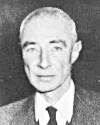 | In 1954, the Atomic Energy Commission, by a vote of 4 to 1 decided against reinstating a certain very prominent scientist’s access to classified information. The Atomic Energy Act of 1946 required consideration of “the character, associations, and loyalty” of those engaged in the work of the Commission. Disqualification was based on perceived associations with Communists judged to exceed tolerable limits of prudence and self-restraint and not merely intermittent or accidental. Can you name the scientist? |
Fast answers for the previous newsletter for June 28: chlorofluorocarbon (CFC) propellants • from 1912 to 1946 (after he had died) • 20 x 30 foot = 600 sq. ft. (6.1 x 9.1 m = 55.7 sq m) • Maria Mitchell • baboon • the decade including the year 1935 • Mackinac Bridge.
 If you enjoy this newsletter, the website, or wish to offer encouragement or ideas, please send feedback by using your mail reader Reply button.
If you enjoy this newsletter, the website, or wish to offer encouragement or ideas, please send feedback by using your mail reader Reply button. Your click on a Facebook, StumbleUpon, or other social button on the site webpages is also a welcome sign of appreciation. Thank you for using them.
© This newsletter is copyright 2020 by todayinsci.com. Please respect the Webmaster's wishes and do not put copies online of the Newsletter — or any Today in Science History webpage. (If you already have done so, please remove them. Thank you.) Offline use in education is encouraged such as a printout on a bulletin board, or projected for classroom viewing. Online, descriptive links to our pages are welcomed, as these will provide a reader with the most recent revisions, additions and/or corrections of a webpage. For any other copyright questions, please contact the Webmaster by using your mail reader Reply button.
--
If you do not want to receive any more newsletters, Unsubscribe
To update your preferences and to unsubscribe visit this link
Executive Real Estate Business Class
-
"It was like a man with wings. It wasn't like anything you'd see on TV or in a monster movie." ...
About the publisher
Search This Blog
Blog Archive
-
▼
2021
(585)
-
▼
June
(64)
- On This Day for June 30 - Night of the Long Knives...
- Newsletter for Wednesday 30 June.
- On This Day for June 29 - London's Globe Theatre d...
- Newsletter for Tuesday 29 June.
- On This Day for June 28 - Assassination of Archduk...
- Newsletter for Monday 28 June.
- On This Day for June 27 - Yen made official moneta...
- Newsletter for Sunday 27 June.
- On This Day for June 26 - Opening of CN Tower, Bab...
- Newsletter for Saturday 26 June.
- On This Day for June 25 - Korean War begun, Antoni...
- Newsletter for Friday 25 June.
- On This Day for June 24 - Russia invaded by Napole...
- Newsletter for Thursday 24 June.
- On This Day for June 23 - Battle of Bannockburn, C...
- Newsletter for Wednesday 23 June.
- On This Day for June 22 - Mutiny against Henry Hud...
- Newsletter for Tuesday 22 June.
- On This Day for June 21 - Japanese forces defeated...
- Newsletter for Monday 21 June.
- On This Day for June 20 - Casket Letters found, Ho...
- Newsletter for Sunday 20 June.
- Tonight at 8/7c: Watch ‘Fight the Power’
- On This Day for June 19 - Rosenbergs executed for ...
- Newsletter for Saturday 19 June.
- On This Day for June 18 - War of 1812 begun, Sir P...
- Newsletter for Friday 18 June.
- On This Day for June 17 - Arrest of O.J. Simpson, ...
- Newsletter for Thursday 17 June.
- On This Day for June 16 - First woman in space, Jo...
- Newsletter for Wednesday 16 June.
- On This Day for June 15 - Magna Carta sealed by Ki...
- Newsletter for Tuesday 15 June.
- On This Day for June 14 - First prisoners at Ausch...
- Newsletter for Monday 14 June.
- On This Day for June 13 - Historic meeting between...
- Newsletter for Sunday 13 June.
- On This Day for June 12 - Election of Boris Yeltsi...
- Newsletter for Saturday 12 June.
- Listen Now! Blindspot: Tulsa Burning Podcast
- On This Day for June 11 - Oklahoma City bomber exe...
- Newsletter for Friday 11 June.
- On This Day for June 10 - First “witch” hanged in ...
- Newsletter for Thursday 10 June.
- On This Day for June 9 - Landslide reelection vict...
- Newsletter for Wednesday 9 June.
- On This Day for June 8 - Michelangelo's David inst...
- Newsletter for Tuesday 8 June.
- Action required: Update your HistoryExtra password
- On This Day for June 7 - Lateran Treaty ratified, ...
- Newsletter for Monday 7 June.
- On This Day for June 6 - Normandy Invasion begun, ...
- Newsletter for Sunday 6 June.
- On This Day for June 5 - Start of the Six-Day War,...
- Newsletter for Saturday 5 June.
- On This Day for June 4 - Dunkirk evacuation ended,...
- Newsletter for Friday 4 June.
- Tonight: ‘Alone’ Returns at 9:30/8:30c
- On This Day for June 3 - Pro-democracy protest in ...
- Newsletter for Thursday 3 June.
- On This Day for June 2 - Elizabeth II crowned quee...
- Newsletter for Wednesday 2 June.
- On This Day for June 1 - Debut of CNN, Morgan Free...
- Newsletter for Tuesday 1 June.
-
▼
June
(64)
-
Blogroll
-
About
HistoryFact










0 comments:
Post a Comment